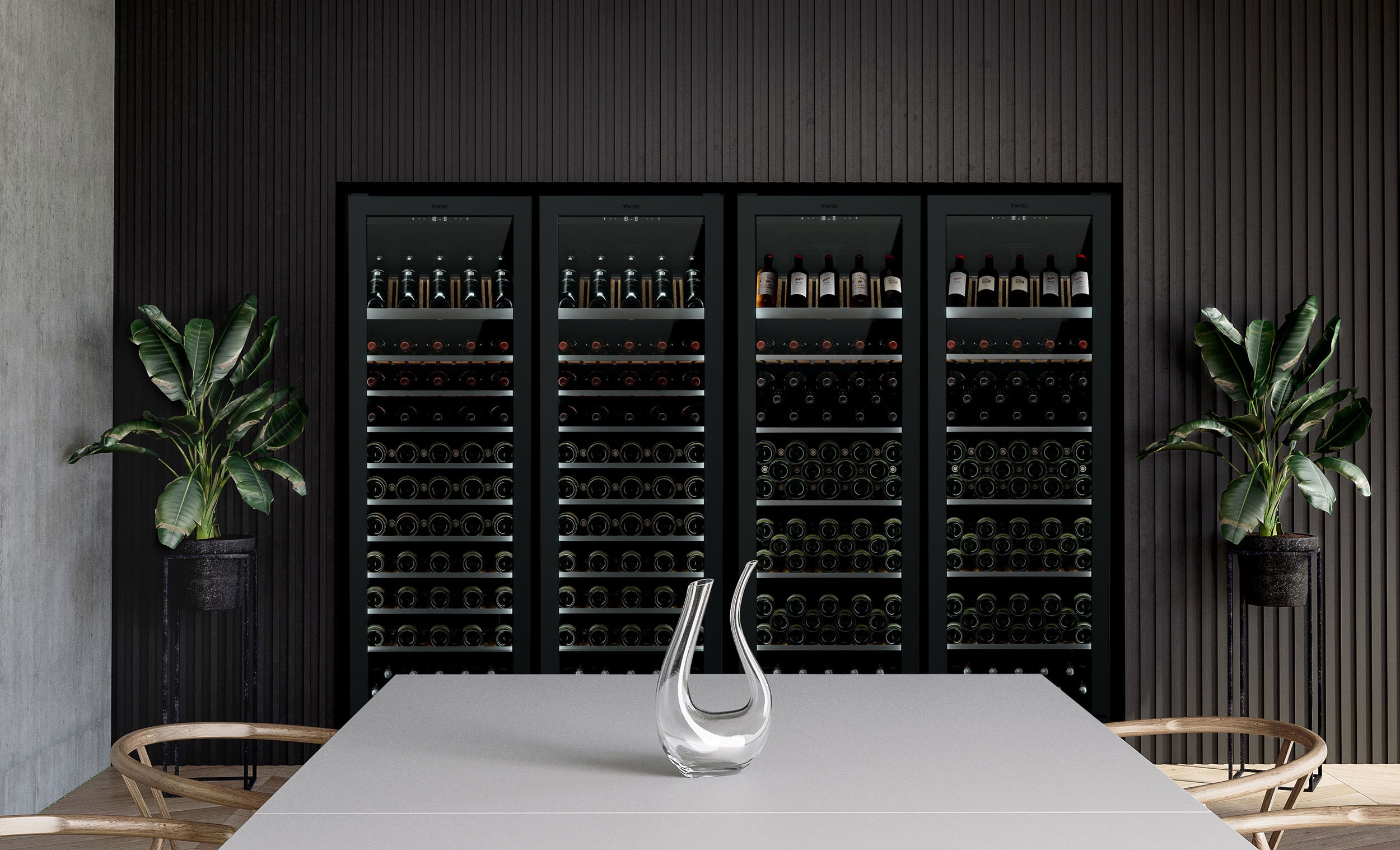Types of Wine Cabinets for Dining Rooms

The heart of any discerning host’s home, the dining room, deserves a wine storage solution as elegant and refined as the meals it graces. Choosing the right wine cabinet isn’t merely about practicality; it’s about making a statement, about showcasing your passion for the art of wine. The options available, from the understated elegance of a built-in to the commanding presence of a freestanding unit, are as diverse as the vintages they house.
Freestanding, Built-in, and Under-Counter Wine Cabinets
The choice between freestanding, built-in, and under-counter wine cabinets hinges on your dining room’s design and your personal preferences. Freestanding cabinets offer flexibility; they can be placed wherever they best complement your décor, acting as a focal point or blending seamlessly into the background. Built-in units, on the other hand, are designed for seamless integration, often becoming an integral part of the room’s architecture, offering a clean, sophisticated aesthetic. Under-counter models, compact and discreet, are ideal for smaller dining areas or those who prioritize space-saving solutions. The materials used also contribute significantly to the overall aesthetic. Rich, dark woods like mahogany or walnut exude warmth and luxury, while lighter woods such as oak or maple offer a brighter, more contemporary feel. Metal finishes, from sleek stainless steel to brushed bronze, provide a modern contrast, adding a touch of industrial chic to the dining room.
Temperature Control Capabilities in Wine Cabinets
Maintaining the ideal temperature for wine preservation is crucial, and wine cabinets offer varying levels of temperature control. Single-zone cabinets maintain a consistent temperature throughout, suitable for storing wines intended for consumption within a shorter timeframe or wines that thrive at a similar temperature. Dual-zone cabinets, however, offer greater precision, allowing you to set different temperatures in separate compartments. This is invaluable for storing both red and white wines simultaneously, ensuring each variety is kept at its optimal temperature for peak enjoyment. A dual-zone cabinet is a significant investment, but for serious wine enthusiasts, the benefits are undeniable. Imagine, the crisp chill of a Sauvignon Blanc perfectly juxtaposed against the rich warmth of a Cabernet Sauvignon, all within the elegant confines of your dining room. The precision temperature control offered by many higher-end models ensures that your collection remains in pristine condition, ready to be enjoyed at its fullest potential.
Comparison of Wine Cabinet Types
The following table summarizes the key differences between four common types of wine cabinets, highlighting their price range, capacity, and features. Remember that prices can vary significantly based on brand, features, and materials.
| Type | Price Range | Capacity (bottles) | Key Features |
|---|---|---|---|
| Freestanding Single-Zone | $500 – $2000 | 20-100 | Variety of finishes, easy placement, simple temperature control |
| Built-in Single-Zone | $1000 – $4000 | 50-200 | Customizable integration, often larger capacity, elegant aesthetic |
| Freestanding Dual-Zone | $1500 – $5000 | 40-150 | Precise temperature control for red and white wines, advanced features |
| Under-Counter Single-Zone | $300 – $1500 | 12-60 | Space-saving design, ideal for smaller spaces, compact and discreet |
Maintaining and Using Your Wine Cabinet: Wine Cabinets For Dining Room

A wine cabinet isn’t merely a storage unit; it’s a climate-controlled sanctuary preserving the delicate balance of your collection. Proper setup and consistent maintenance are crucial to ensuring your wines age gracefully and reach their peak potential. Understanding the nuances of temperature, humidity, and organization will elevate your wine-drinking experience from pleasant to exceptional.
Setting Up Your Wine Cabinet, Wine cabinets for dining room
Begin by selecting a location free from direct sunlight and significant temperature fluctuations. Ideally, the cabinet should sit away from heat sources like ovens or radiators, and ideally against an interior wall. After positioning the cabinet, allow it to settle for at least 24 hours before plugging it in. This ensures the internal components have adjusted to their surroundings, minimizing the risk of malfunction. Once plugged in, set the temperature and humidity levels according to the manufacturer’s recommendations. Most wines benefit from storage between 55°F and 65°F (13°C and 18°C), with humidity around 50-70%. Monitor the temperature and humidity using the cabinet’s internal gauges or a separate hygrometer and thermometer for accurate readings. Allow a few days for the cabinet to stabilize at your desired settings before adding your wine collection.
Organizing Your Wine Bottles
Proper organization isn’t just about aesthetics; it maximizes space and allows for easy retrieval of specific bottles. Several methods cater to different preferences and collection sizes. Consider organizing by varietal (e.g., Cabernet Sauvignon, Chardonnay), vintage (oldest to newest), or region (e.g., Bordeaux, Burgundy). A combination approach might be ideal for larger collections, perhaps organizing by country then by varietal within each country section. For visual appeal, consider using dividers or racks to separate different types of wine, creating a visually pleasing and functional arrangement. Remember to always store bottles on their sides to keep the cork moist and prevent it from drying out.
Maintaining Your Wine Cabinet
Regular maintenance is essential for preserving your investment and ensuring optimal wine storage conditions. This includes cleaning the interior regularly, typically every three to six months, with a damp cloth and mild detergent. Avoid harsh chemicals which could affect the flavor of your wines. Inspect the filter (if applicable) and replace it according to the manufacturer’s guidelines, usually annually. A clogged filter can impact both temperature and humidity control. Keep a log of filter replacements and other maintenance tasks to track your progress.
- Monthly: Check temperature and humidity levels, visually inspect bottles for leaks or damage.
- Quarterly: Clean the interior with a damp cloth and mild detergent.
- Annually: Replace the filter (if applicable), inspect the seals for any wear and tear.
- As needed: Troubleshoot any issues like unusual noises or temperature fluctuations; consult the manufacturer’s manual or a professional if needed.
